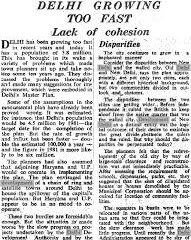Understanding the Current Situation in Afghanistan 2023

Introduction
The situation in Afghanistan remains a topic of global attention and concern as the country navigates a challenging path since the Taliban’s return to power in August 2021. With human rights violations, economic instability, and international relations at the forefront, understanding Afghanistan’s current state is crucial for policymakers, humanitarian organizations, and global citizens alike.
Humanitarian Crisis
As of 2023, Afghanistan faces one of the most severe humanitarian crises worldwide. The United Nations has reported that approximately 24.4 million Afghans, nearly two-thirds of the population, are in need of assistance. Many families are struggling with widespread food insecurity, with the World Food Programme citing that 19 million people are experiencing acute hunger. Humanitarian organizations continue to push for aid, amid significant funding shortfalls and restricted access under the Taliban-led administration.
Human Rights Violations
The Taliban’s rule has been marked by numerous reports of human rights abuses, particularly against women and girls. Since reinstating control, the Taliban has severely restricted women’s freedoms, including access to education and employment. According to reports from Human Rights Watch and Amnesty International, the regime has implemented measures that negate the achievements made over the past two decades and has exacerbated the plight of the marginalized in society. Global calls to hold the Taliban accountable continue to rise, yet concrete actions remain limited.
International Relations and Response
The Taliban’s position has posed significant challenges for international diplomacy. Countries are grappling with how to recognize or engage with the Taliban while addressing human rights concerns. While some nations have resumed limited engagements, including humanitarian assistance, financial aid remains frozen due to the Taliban’s political status. The ongoing geopolitical tension with regional powers and the impact of the situation on global security epitomizes the complex landscape surrounding Afghanistan.
Conclusion
As Afghanistan faces an uncertain future, the need for a renewed focus on humanitarian aid, human rights advocacy, and responsible international relations is more pressing than ever. With ongoing crises threatening the lives of millions, the global community must respond with concerted efforts to help the Afghan people navigate their current challenges. Failure to do so may lead to further instability, perpetuating the cycle of hardship that has defined Afghanistan for decades. It is imperative for engaged citizens and policymakers to remain informed and responsive to the evolving situation in Afghanistan.









